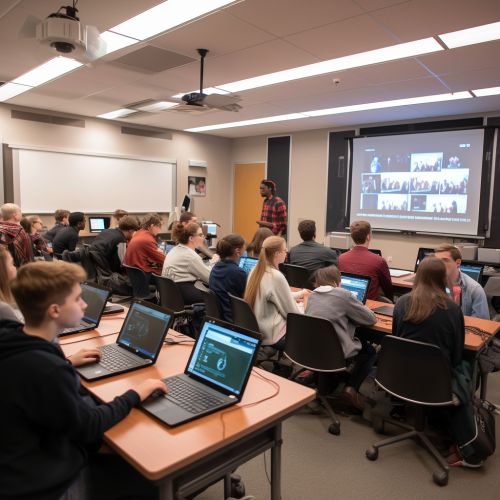AI in Education
Introduction
Artificial Intelligence (AI) in education refers to the integration of AI technologies into learning environments, with the aim of enhancing teaching and learning processes. This interdisciplinary field combines elements from computer science, cognitive psychology, and education, and is characterized by the development and application of intelligent systems to support learning and instruction.


History and Development
The concept of AI in education has its roots in the field of computer-assisted instruction, which emerged in the 1960s. The first AI-based educational systems were developed in the 1970s, with the advent of intelligent tutoring systems (ITS). These systems used AI techniques to provide personalized instruction to students, based on their individual learning needs and abilities.
In the 1980s and 1990s, the focus of AI in education shifted towards the development of intelligent learning environments. These environments used AI technologies to support collaborative learning and problem-solving, and to provide students with a more interactive and engaging learning experience.
In the 21st century, the field of AI in education has expanded significantly, with the development of new AI technologies and applications, such as machine learning, natural language processing, and data mining. These technologies are being used to develop more sophisticated and effective educational systems, which can adapt to the needs of individual learners, and provide personalized and adaptive instruction.
Applications of AI in Education
AI technologies are being used in a variety of ways in education, including:
Intelligent Tutoring Systems
Intelligent tutoring systems (ITS) are computer-based instructional systems that use AI techniques to provide personalized instruction to students. These systems are designed to adapt to the needs of individual learners, and to provide feedback and guidance based on their performance and progress.
Adaptive Learning Systems
Adaptive learning systems use AI technologies to adapt the content and pace of instruction to the needs of individual learners. These systems use machine learning algorithms to analyze student performance data, and to make predictions about their learning needs and abilities.
Learning Analytics
Learning analytics involves the use of AI technologies to analyze educational data, with the aim of improving teaching and learning processes. This can involve the use of machine learning algorithms to identify patterns and trends in student performance data, and to make predictions about student outcomes.
Educational Data Mining
Educational data mining involves the use of AI techniques to analyze large amounts of educational data, with the aim of discovering patterns and relationships that can inform educational decision-making. This can involve the use of machine learning algorithms to identify patterns and trends in student performance data, and to make predictions about student outcomes.
Natural Language Processing
Natural language processing (NLP) involves the use of AI technologies to analyze and understand human language. In education, NLP can be used to develop systems that can understand and respond to student questions, and to provide feedback on student writing.
Challenges and Ethical Considerations
While AI has the potential to transform education, it also presents a number of challenges and ethical considerations. These include issues related to privacy and data security, the risk of algorithmic bias, and the potential impact on the role of teachers.
Privacy and Data Security
The use of AI in education involves the collection and analysis of large amounts of student data, which raises concerns about privacy and data security. There is a need for robust data protection measures to ensure that student data is used responsibly and securely.
Algorithmic Bias
AI systems are trained on data, and can therefore reflect and perpetuate biases present in that data. This can result in biased predictions and recommendations, which can have a negative impact on students.
Role of Teachers
The integration of AI into education has the potential to change the role of teachers, and to shift the focus of teaching from instruction to facilitation. This raises questions about the future role of teachers, and the skills and competencies they will need in an AI-driven education system.
Future Directions
The field of AI in education is evolving rapidly, and there are many exciting opportunities for future research and development. These include the development of more sophisticated and effective AI-based educational systems, the integration of AI into traditional classroom environments, and the exploration of new ways to use AI to enhance teaching and learning.
